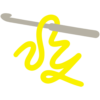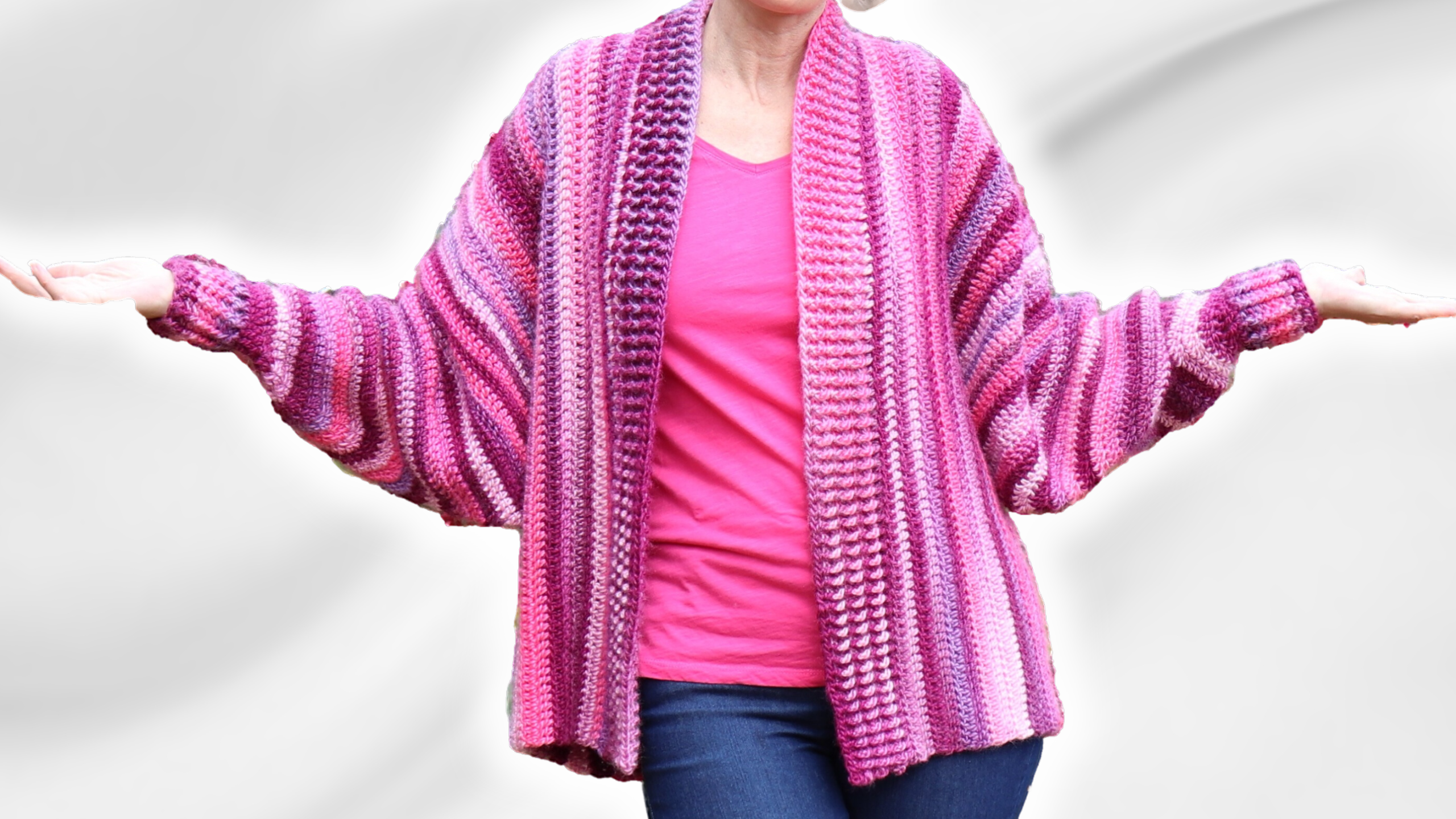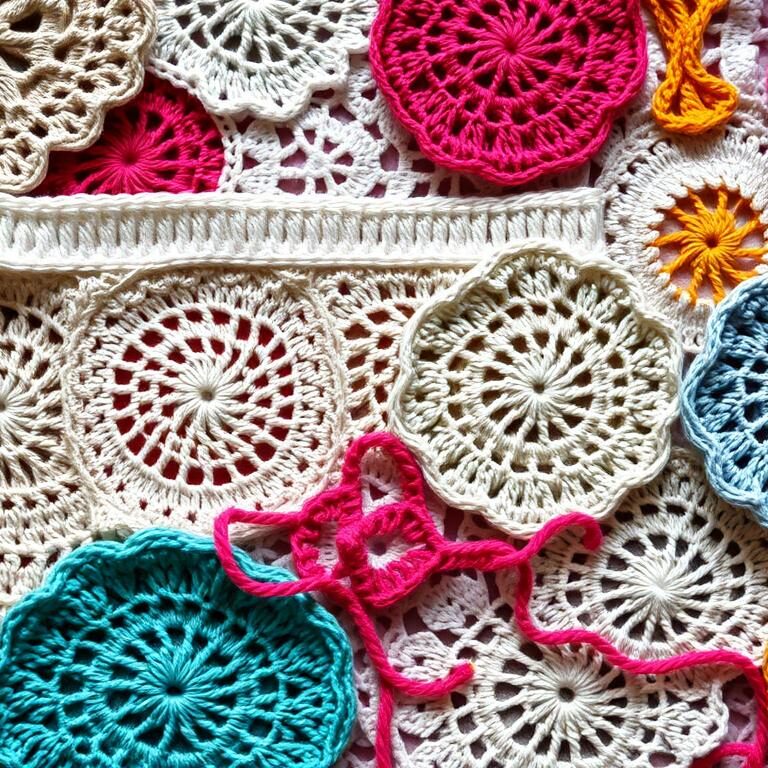The Tammy Sweater – Easy Crochet Sweater for Beginners 2024!
The Tammy Sweater: Easy Crochet Sweater for Beginners
The Tammy Lethbridge Breast Cancer Awareness Sweater is an easy crochet sweater for beginners, making it perfect for first-time sweater makers. What sets this sweater apart is its simplicity and flexibility—it’s made based on your body measurements, so you get a custom fit every time. You can also decide whether to add cuffs or leave them flat and rib-free. The sleeves are worked in a spiral, so there’s no complicated joining under the arms, making it a great option for folks with larger arms, as it features dolman sleeves.
Ready to start? Here’s everything you need for this project:
Yarn and Tools You’ll Need
For Tammy’s sweater, we’ll be using Ice Yarn Ambient. This yarn is a lovely combination of 50% wool and 50% acrylic. Each ball weighs 100g and extends to 134 meters. It’s comparable to Lion Brand’s Landscape yarn in terms of length and weight but with added wool content. You’ll need 12 balls of this yarn (or about 1100g), though exact usage may vary depending on your size. Here’s a peek at the full list of materials:
- Yarn: Ice Yarn Ambient (3 packs of 100g balls, 134m per ball)
- Crochet Hook: 6mm for the yarn
- Other tools: Darning needle, stitch markers, and scissors
Once you’ve got those, it’s time to get started!
Starting the Sweater: Chainless Foundation
To begin, we’ll be using a chainless foundation instead of the traditional chain. If you’re unfamiliar with this technique, it’s a great way to ensure your foundation has the same elasticity as the rest of the sweater, which is essential for a good fit. If you prefer to start with a chain, you can still proceed, but remember to use a slightly larger hook for your chain so it doesn’t end up too tight.
If you need help mastering the chainless foundation, here’s a helpful tutorial on chainless foundation.
Top Tip: For best results, make sure to leave a long enough tail when adding your initial slip knot. You’ll want at least five or six inches to sew in later.
Getting the First Rows Right
Once the chainless foundation is ready, move on to your double crochets. The sweater is worked with just double crochets, making it beginner-friendly yet enjoyable for experienced crocheters. You’ll be chaining four to start and working back into your stitches.
The trick here is to keep an eye on your tension. You want your chain stitches to have equal stretchability to the rest of the sweater. A tight chain will make the bottom of your sweater feel stiff, so be sure to give your work a gentle pull as you crochet to verify that everything has the same amount of give.
Creating the Body of the Sweater
Now that you’ve got the foundation down, it’s time to build up the body. For this, you’ll be alternating between front and back rows. Each row is turned with a chain of one, and the stitches are made into the dimples of the previous row’s double crochets.
Remember to count your stitches as you go – consistency is key here. Make sure your stitch count stays even so that both sides of your sweater are equal. If you need a refresher on consistently counting stitches, this guide to crochet techniques does a great job of explaining how to keep track.
The pattern is worked in continuous rows until you reach the right width for your body. This width is determined by taking the measurement of the widest part of your body (whether it’s your chest or hips) and then dividing that number by four. So, if your hips measure 40 inches, for example, you’ll need to make sure your folded piece is about 10 inches across.

Shaping the Neckline
Once you’ve reached the desired sweater width, it’s time to begin shaping the neckline. This part is simple—we’ll be dividing the work to leave a gap where the neck will sit. Use stitch markers to accurately split your work and keep track of your stitches.
You’ll work up the front flaps and leave about 80 stitches open for the neck. When working on the back of the sweater, you’ll add rows without skipping stitches so that the sweater can fold properly along the neckline.
Joining the Front and Back: A Step-by-Step Guide
The join is one of the coolest parts of the Tammy Sweater—it’s done in a seamless, join-as-you-go method. Here’s how you’ll do it:
- Fold the front flaps down along the back piece.
- Use stitch markers to count off areas that you’ll be leaving open for the sleeves.
- Use double crochets in combination with small slip stitches to join the front and back together.
Pro Tip: Make sure you work on a flat surface for this step. It’ll keep everything smooth and aligned correctly (trust me, it saves time later). I like to lay the pieces out on my bed so I can work the join easily without anything sliding around.
Crafting the Sleeves
Once the body is complete, it’s time to work on the sleeves. The sleeves are created directly from the armholes, so you don’t need to attach anything separately. We use decreases to shape the underarm. If this part is new for you, place stitch markers two stitches before and after the underarm join point to help you keep track of the decreases.
For each round, identify your decrease points and work your way down using double crochet decreases. This ensures that your sleeves fit snugly but aren’t tight. It also creates a seamless flow between the sleeve and the body of the sweater.
Finishing the Sleeves with Cuffs
Measuring your sleeve length is crucial. You want the sleeve to be about four to four-and-a-half inches wide before moving on to the cuff. Once you’re happy with the length, you can create a classic ribbed cuff using front post and back post double crochets.
This technique gives the cuff its stretchy, ribbed texture and a polished, fitted look. If you’d rather something simpler (or if you’re low on yarn), you can create a simple flat cuff by continuing in double crochets without any ribbing.
Want more on crochet sweater cuffs? Check out “5 Must-Try Easy Crochet Sweaters for Beginners” for a breakdown of several simple cuff options.
Adding the Collar
The final step to completing your sweater is adding a collar. Much like the cuffs, the collar is worked in alternating front post and back post double crochets to create a ribbed effect. You’ll crochet around the neck opening and continue for a few rounds until the collar reaches your desired thickness (or until you run out of yarn).
If ribbing isn’t something you love, feel free to make a flat collar instead by using just double crochets for a simple edge.
Assembly and Final Adjustments
Before signing off on your project, make sure the pieces are neatly aligned. Your sleeve seams should meet the body evenly, and the underarm seams should sit flush against your body. There’s no shame in trying it on a few times before deciding it’s ready—crochet will naturally stretch a bit to conform to your body, so your sweater will only soften with time and wear.
Left Handed?
Conclusion
Can’t wait to see your finished Tammy Sweater! This easy crochet sweater for beginners is one of those projects you’ll feel proud of—whether you’re making it for a Breast Cancer Awareness event or for your own cozy wardrobe. Make sure to share a photo of your finished sweater, especially if you rock that hot pink yarn! If you’re interested in more sweater patterns, browse through my roundup of crochet sweater designs—there’s something for everyone.
FAQ
1. Can I use a different yarn from the one in the tutorial? Absolutely! Feel free to use any yarn that matches the size/weight recommendation (size 5 for this project). Consider testing your yarn first to ensure the sweater maintains shape and texture.
2. How can I adjust the Tammy sweater if my arms are larger? The dolman sleeves are perfect for accommodating larger arms. Simply follow the pattern, and the loose fit will naturally adjust to your size.
3. How do I keep track of all the stitch markers? Stitch markers are key for evenly spaced, mistake-free crochet. If you’re feeling overwhelmed by all the markers, break it down into sections—work one area at a time and move your markers as you go.
4. Is there a left-handed version of the crochet tutorial? Yes, you can follow along with the left-handed version found here: Left-Handed Tammy Sweater Tutorial
5. What should I do if my chain ends up too tight? If your chain feels too tight, try using a hook one size larger for the chain stitch—and remember to relax your tension. You can also switch to a chainless foundation, which provides more elasticity.
Happy crocheting!
With her unique teaching style and genuine warmth, Christa Patel has built a global following at the Secret Yarnery, a place where crochet isn’t just a craft but a way to connect with others. Known for her straightforward and fun approach, Christa provides in-depth tutorials, step-by-step patterns, and beginner-friendly resources that make crocheting enjoyable and approachable, no matter your skill level.




